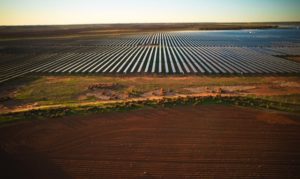In order to meet the Renewable Energy Target, established by the federal government, a scheme of renewable energy certificates, equivalent to 1 megawatt of renewable energy, was created to provide a financial incentive for renewable energy creation.
Initially this was in the form of a “Renewable Energy Certificate” (REC), a uniform scheme covering all means of creating renewable energy. But with the runaway success of small-scale solar PV, the government split the scheme and replaced Renewable Energy Certificates with a scheme for small scale generation below one hundred kilowatts, known as a “Small-scale Technology Certificate” (STC) and for systems over 100 kilowatts a certificate known as “Large-Scale Generation Certificate” (LGC) was created. This change occurred because the huge amount of small-scale solar PV systems being installed kept certificate prices lower than predicted and reduced the incentive for large-scale renewables investment.
A split system was designed to allow each of the two sectors to operate separately. The government could then prescribe the amount of renewable energy certificates each camp must supply. The small-scale certificates program also came with a clearing house facility, a means of ensuring certificates were always available, regardless of the amount of certificates being created. It also guaranteed a fixed price of $40 per STC for all certificates sourced from it. For the great majority of time it has been in place, the open market has been a cheaper and reliable source of STCs, therefore few purchases have been from the clearing house to date.
As open market STCs continue to firm in price, the spectre of a clearing house in deficit looks very possible. It looks clear that liable entities are swiftly emptying their stockpiles of STC’s and have even contacted STC creators directly to shore up supplies at a cheaper cost than via a broker. This would not happen if the market was awash with certificates. My story of the revised surrender quota (the amount of STC’s needing to be surrendered) reinforced my prophecy.
So what happens next? It appears that despite the industry’s best efforts to change the Abbott agenda through influencing the WA senate election re-run, this may not bite as much as expected and the Libs could well increase their number of effective votes, rather than lose them. With the complete vacuum of new policy announcements since the federal election, one can only assume that a master plan has been drawn up for just about everything, including the renewable energy target (RET), and even small-scale solar.
So what is in this plan? Will Abbott close the clearing house as soon as it empties and leave STC’s to float with no upper or, more importantly, lower limit? Any moves to favour large-scale renewables at the expense of small-scale projects would decimate the PV industry, it could happen by simply taking away the need to surrender STC’s or reducing the amount required.
You can almost be assured that when Abbott is embarrassed enough to retain the RET, he will be taking into consideration the screams of state governments, who are crying about lost revenue streams from their state-owned distributors due to small-scale solar.
Joe Hockey’s incentives to the states to sell off state-owned distributors almost guarantees that only large-scale, centralised renewable energy projects, backed by the big corporates, will benefit from a retained RET. Centralised and remote renewables still need all those poles and wires that small-scale rooftop installations have been making redundant, thus rescuing an asset from devaluation just in time for it to be sold off.
I would be watching very carefully for legislation that forces an access charge on households for having a grid connection available, even if it is not used, the same as we have for water and sewerage. What a fantastic underlying, guaranteed income stream the states could lure prospective buyers with, a guaranteed charge to every household even if they are off-grid.
We must be vigilant.










